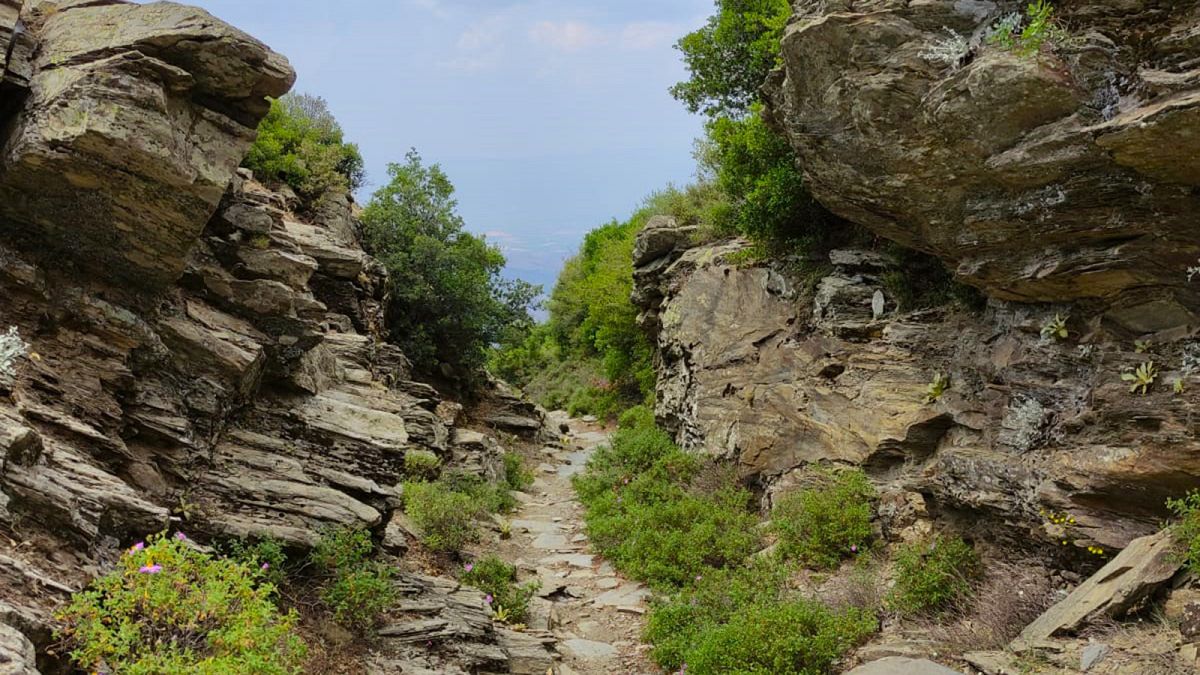Türkiye’s Efeler Way should be on every hiker’s list – here’s why
A major new walking trail launched in Türkiye’s İzmir region looks to preserve the cultural heritage of some of the country’s most historic locations.
To say Türkiye is a big country is an understatement, and visitors looking to get to grips with its extensive and complex history are likely to need more than one visit. Luckily, there’s now a new way for curious travellers to dig deeper into the country’s past, thanks to the Efeler Way (Yolu) Cultural Route – a 500-kilometre, marked walking trail through the İzmir region.
The hike, which traverses the Bozdağ Mountain Range, weaves through the Kiraz Highlands, crosses the Aydın Mountain Range and ends in the House of the Virgin Mary in Ephesus, is designed to showcase the historic efe/zeibek culture.
Along the way, hikers will pass through 28 villages, each of which has been home to a variety of ancient civilisations. At each one, they’ll have the opportunity to learn about the locals’ practices and customs and absorb their way of life.
In 2023, the route was acknowledged as one of Green Destinations Top 100 Stories for its efforts to preserve the region’s natural, historical and cultural riches.
Keen to try it? Here are some of the highlights you can look forward to.
Nazarköy
This quaint village (whose original name was Kurudere) sits at the foot of the beautiful Kurudere Nature Reserve. With few inhabitants (some estimates put it at only 350 people) it’s a stunningly quiet place to take some time out on your long journey.
One of its defining characteristics is its “evil eye beads” – they’re the reason, in fact, for the village’s renaming as nazar means “the evil eye”. Made from glass, these brightly coloured spheres originate from shamanistic times and are intended to ward off the “jealous gaze”. Visitors can see how they’re made by stopping in at one of the local glass blower workshops. Travel in May during the Nazarköy Bead Festival to see some of the community’s most elaborate work, including necklaces, earrings and ornaments.
Bozdağ
If you’re thinking about this trail, chances are you like the outdoors, so soaking up the breathtaking topography of the Bozdağ mountain chain will certainly be a highlight. The mountain’s eponymous village lies on the slopes of Mount Bozdağ and is all snow-capped roofs and protruding minarets. The village might be small (its last registered population size was just over 500) but it attracts skiers, hikers and climbers from all over the world thanks to the mountain’s 2156-metre peak.
Climbing is particularly popular here, with various routes on offer from the popular “The Classic” route to the more technical and challenging “Dik Deresi”. You don’t have to be a climber to hit the summit though, walkers are welcome. The primary route up is easily navigable, though can be steep at times so make sure you’re well equipped. Expect to traverse forested slopes, see grazing mountain sheep and enjoy the well-earned reward of breathtaking views over the Ödemis Valley.
Birgi
Further down Bozdağ, sitting just its shadow, lies the ancient town of Birgi. Often noted as one of the prettiest towns in Türkiye, it has oodles of history (past inhabitants include cultures going as far back as the Phrygians) seeing it put on UNESCO’s “tentative” list and making it one of the best stops on the route.
Ottoman architecture is prevalent here with two-story courtyard houses crowding tiny streets – many of which are dead ends. Pop into the Ulucami Mosque, which was built in 1312 and features marble walls and a glazed brick minaret. Inside, intricate, brightly-coloured Seljuk tiling mesmerises, while the mosque’s minbar walnut door took 3,000 pieces of wood to construct and made headlines when it was stolen in 1993 (it was later retrieved).
Şirince
Just 12 kilometres from the ancient city of Ephesus lies Şirince, which historically prospered from its agricultural outputs such as figs, olives, vines and vegetables, making it a great place to sample local cuisine – we recommend trying pekmez (fruit molasses) from the market.
Şirince also has serious wine credentials. You can stroll through the lush vineyards and even book a tasting to sample some of the area’s bottles, which draw on a variety of endemic grapes. Whether you prefer your wine bold or balanced, there’s something for everyone.
Being car-free, Şirince’s cobbled streets are a pleasure to stroll around. Be sure to check out the bazaar to see villagers’ handiwork including handmade clothing, jewellery and traditional Turkish coffee.
Mount Nif and the Karebel Relief
The Efeler Yolu Culture Route is about as scenic as they come, chock full of unchanged villages as well as undulating rural landscapes filled with canyons, waterfalls and mountains. In addition to Bozdağ, another peak stands out for both its beauty and historic markings.
Travellers can take in the majestic view of Mount Nif (and hike up to see stunning views from the peak) during the second half of the trail. This towering rock not only soars skywards for 1,510 metres, but also distinguishes itself from others in the craggy chain thanks to a border with the Karabel Pass. Here, curious visitors should seek out the now-famous Karabel Relief – a monument carved into the side of the mountain depicting Luwian local leader “Tarkasnawa, King of Myra”, which dates back to 1350 BCE.


/cloudfront-us-east-2.images.arcpublishing.com/reuters/MYELLIGNKFIB5K6AYXP2BDUG6A.jpg)

